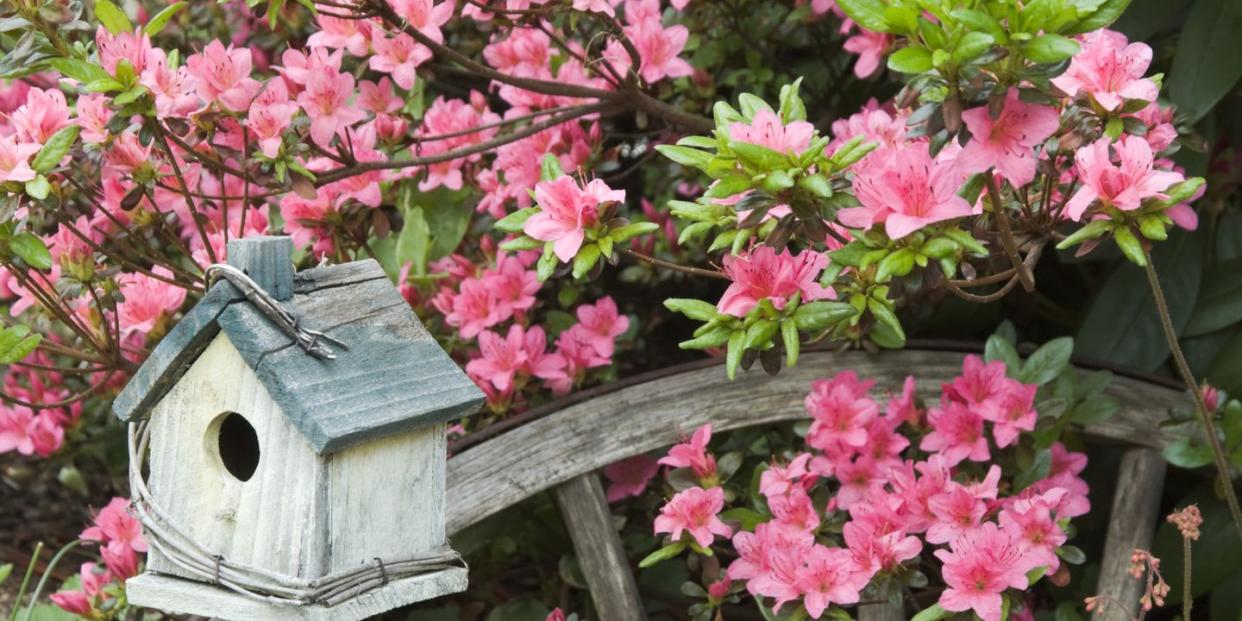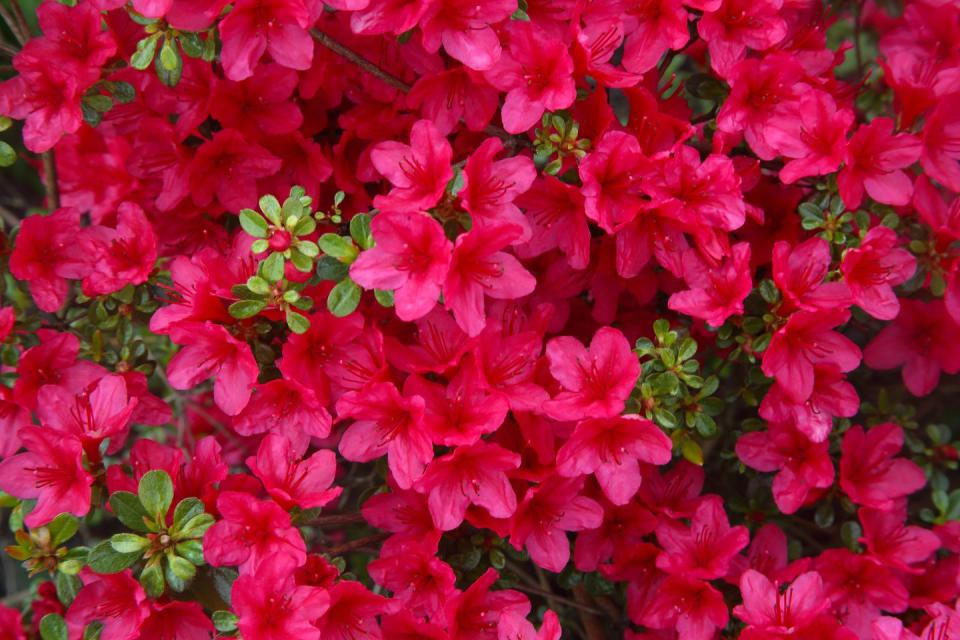Increase Curb Appeal By Growing Azalea Bushes in Your Front Yard

After a long, cold winter, spring-blooming shrubs offer welcome splashes of garden color. One of our favorite spring-blooming plants is the Azalea. It's a reliable bloomer with funnel-shaped flowers and a range of colors.
They're generally low-maintenance plants, without many pests or disease issues. They've been hybridized for hundreds of years, and there are thousands of named varieties to choose from, making it easier to find a distinctive one just right for your yard.
Though azaleas are traditionally Southern shrubs, there are new varieties that are more cold-tolerant. Now you can plants bred to flourish as far north as USDA Hardiness zone 3. (Find your zone here).
There are also new types of azaleas that bloom more than once a year. “Reblooming varieties allow you to enjoy flowers again later in the growing season,” says Natalie Carmolli, public relations specialist with Proven Winners Color Choice Shrubs. “The biggest show is in the spring, but then you’ll have secondary blooms from late summer to early fall.”
Here's what you need to know about how to grow azaleas:
Azalea Highlights
Common Name: Azalea
Botanical Name: Rhododendron
Plant Family: Ericaceae
Type of Plant: Shrub
Native Origin: Japan, North America
Sun Exposure: Full to part sun, depending on the variety
Preferred Soil Type/ pH Range: Moist, well draining/ slightly acidic
Mature Size: 2 to 3 feet tall and wide to 12 to 15 feet tall and wide
Flower Color: White, pink, red, lavender, salmon, orange, yellow
Toxicity: Toxic to pets if ingested
Hardiness Zones: 3 to 9
Helpful Hints: Azaleas are shallow-rooted so they benefit from a layer of mulch to keep roots cool and moist
What’s the difference between azaleas and rhododendrons?
Azaleas and rhododendrons are related, which can cause confusion, especially since their scientific and common names overlap.
All plants called azaleas and all plants called rhododendrons come from the genus Rhododendron, says Carmolli. (A genus, if you don't recall science class from way back when, is a group of different species.)
But plants commonly called "rhododendrons" are evergreens, while azaleas can be either evergreen or deciduous. Rhododendrons also have thick, glossy, almost leathery leaves and they tend to be larger and more cold hardy than most azaleas.

How do I grow azaleas?
Azaleas are happiest in dappled shade, such as under the shelter of tall pines. They need some sun to bloom well, but they’ll do better if shielded from blazing hot afternoon sunlight, especially in hot climates, such as zones 8 and warmer, says Carmolli. Flowers also last longer when the plants are partially shaded.
When planting your shrub, dig a hole about two to three times as wide as the root ball, and just about as deep. Ease the plant out of its pot, then place it in the hole at the same depth (or even a smidge higher) than it was in the container.
Then fill it back in with the native dirt. Don’t add any peat moss or potting soil to the hole. This can cause drainage problems, as well as root circling (where the roots don't spread out) and the bush won't be as sturdy.
Backfill the soil, tamp down gently, then water your shrub well. Keep watering regularly until the plant is fully established, especially during the first year or two.
It’s also fine to fertilize in early spring and late spring with a granular extended-release fertilizer. Because they don’t like to dry out completely, water if you haven’t had rain for a week or two. A 2 to 3 inch layer of mulch will help maintain soil moisture, as well as keep down weeds. But keep the mulch a few inches away from stems so you don't invite disease or pest issues.
Should I prune my azaleas?
Fortunately, you don’t need to prune your azaleas. The shrubs are naturally well shaped. With reblooming varieties, you can snip off a few stems, if you do it immediately after the first bloom.
This will not only shape it, but will stimulate more growth, says Carmolli. But otherwise, simply sit back and enjoy the pretty, colorful flowers these shrubs provide.
Can I grow azaleas in pots?
"You can absolutely grow an azalea in a container," says Kristina Howley, a horticulturalist with Proven Winners. Because the roots will get colder, not being directly in the ground, you'll want to "choose a variety that is at least two USDA zones hardier than your own," she says.
For example, if you live in zone 5, choose an azalea that's hardy to zone 3. Also, in cold climates, use a frost-proof pot (not something like terra cotta, which may shatter when freezing temperatures arrive).
The azalea can remain in the pot for 3 to 5 years before you should take it out to replenish the potting soil or to size the container up to accommodate the root ball. When you notice the plant is starting to decrease in vigor, says Howley repot it.
Are azaleas toxic to pets?
Unfortunately, yes.
Azaleas are toxic to cats and dogs, according to the ASPCA. When ingested, this plant can cause GI distress including vomiting, diarrhea, weakness, and even cardiac failure.
If you have a pet that likes to nosh on plants, keep them away from this shrub. And if you suspect your pet has eaten any of this plant, even if you're not sure, contact your vet immediately. It's always better to be safe than sorry!
You Might Also Like

